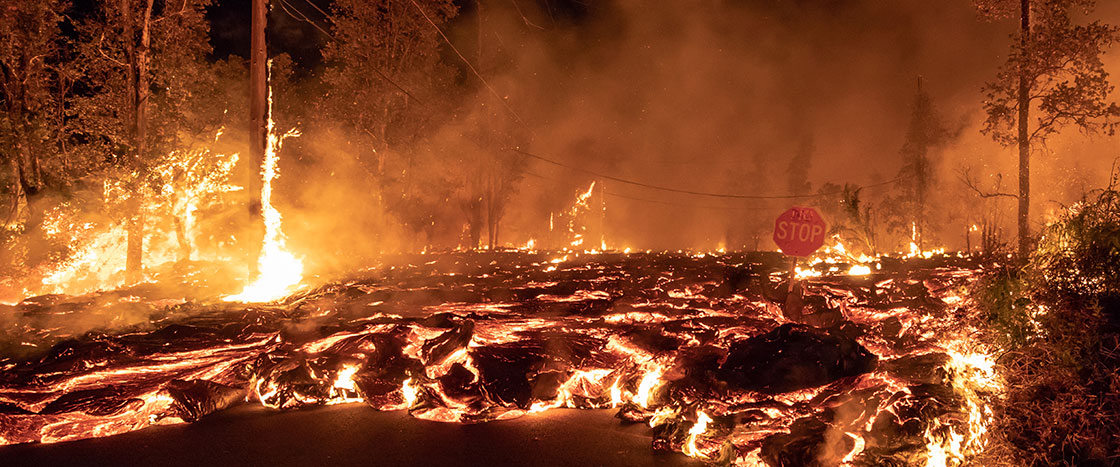Imagine you’re at recess. Basketballs are bouncing. Kickballs sail through the air. Kids are swinging from the jungle gym and trading Pokémon cards on the blacktop.
And then suddenly, BOOM!
An explosion shatters the peaceful afternoon. The ground shakes. Your heart stops. You stare in amazement as a massive gray cloud rises up into the sky.
You instantly realize: It’s a volcano erupting, just 2 miles from your school.
That is what happened this past May to 12-year-old Joshua Gula and his friends. Josh lives on the Big Island of Hawaii, home to Earth’s most active volcano: Kilauea.
For years, Kilauea had seemed tame. “We were never scared of it,” Josh says.
But like a purring cat that transforms into a roaring lion, this volcano had changed.
Was Kilauea turning into a killer?
Imagine you’re at recess. Basketballs are bouncing. Kickballs sail through the air. Kids are swinging from the jungle gym and trading Pokémon cards.
And then suddenly, BOOM!
An explosion shatters the peaceful afternoon. The ground shakes. Your heart stops. You stare as a huge gray cloud rises into the sky.
It’s a volcano erupting, just 2 miles from your school.
That is what happened this past May to 12-year-old Joshua Gula and his friends. Josh lives on the Big Island of Hawaii, home to one of Earth’s most active volcanoes: Kilauea.
For years, Kilauea had seemed tame. “We were never scared of it,” Josh says.
But like a purring cat that turns into a roaring lion, this volcano had changed.
Was Kilauea turning into a killer?


